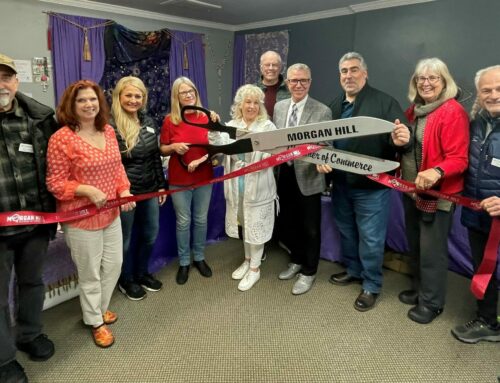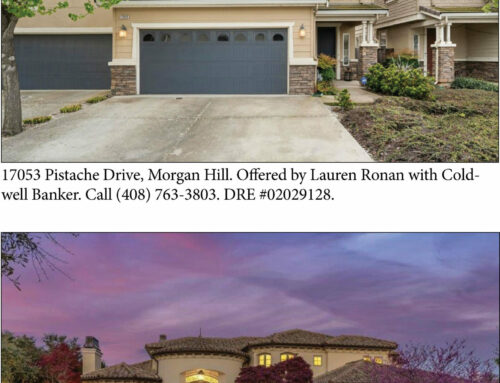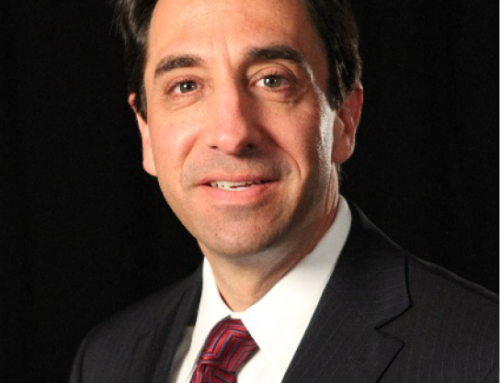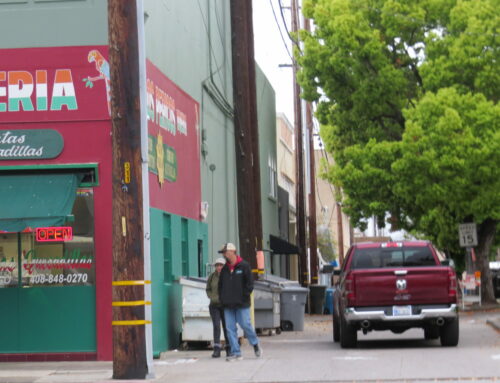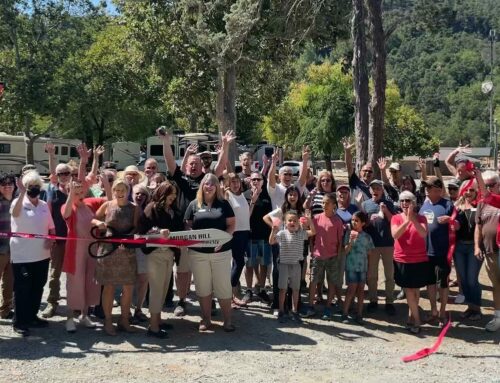New north-south roadway will reduce traffic in local neighborhoods
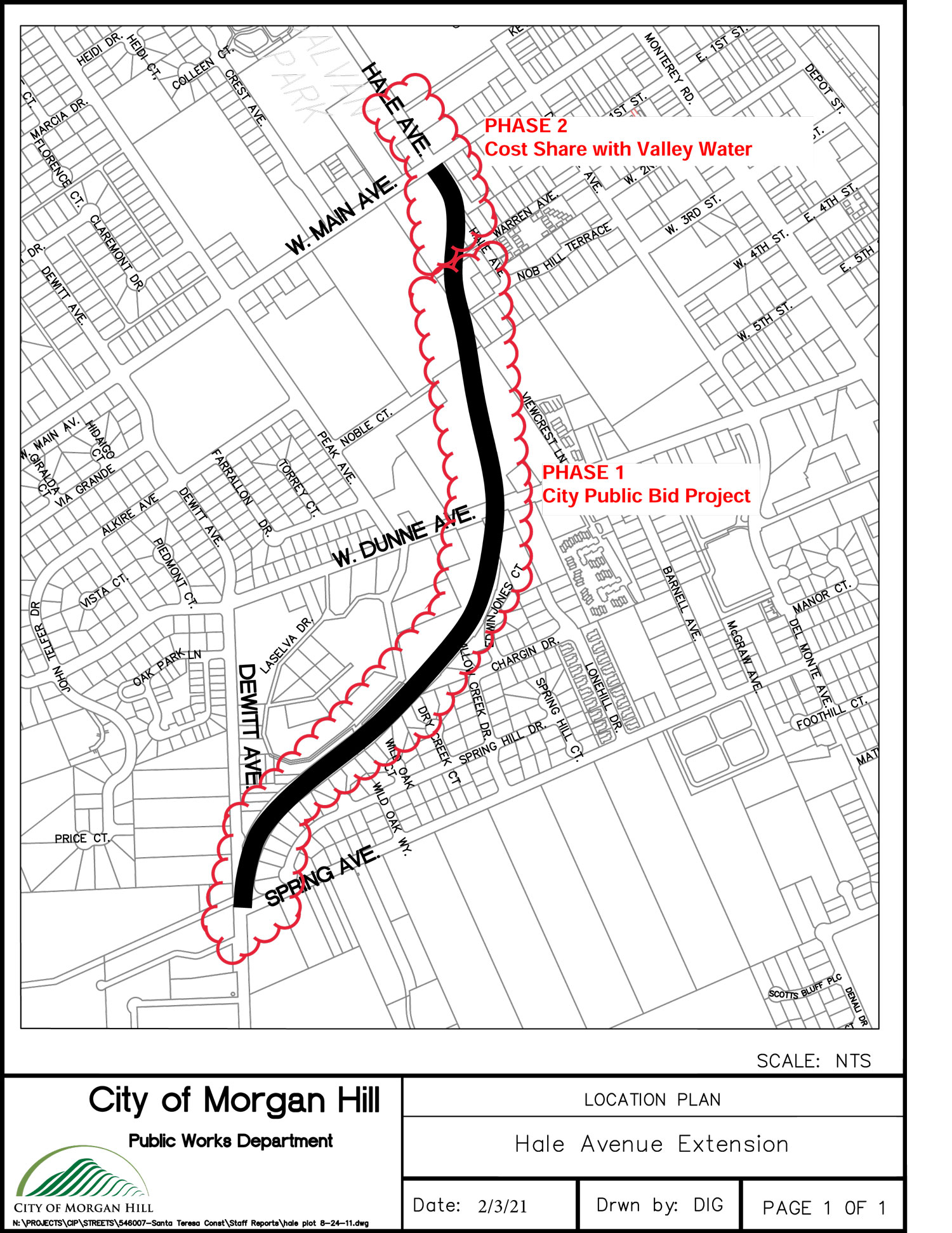
Photo courtesy city of Morgan Hill
Construction on the north-south Hale Avenue Extension begins this month and is expected to be completed next summer.
By Marty Cheek
Dirt will fly this month as construction begins on the long-awaited Hale Avenue extension project, a north-south bypass a few blocks west of downtown Morgan Hill that will help ease traffic congestion in the surrounding neighborhood streets.
 The $19.7-billion bypass will stretch from Hale Avenue where it intersects Main Avenue to DeWitt Avenue at Spring Avenue. Measure B funds will provide $16.5 million of the construction costs. With two vehicle traffic lanes, the extension will be a multi-modal roadway with bike lanes and a separated pedestrian path when it is finished with an expected completion date of summer 2022.
The $19.7-billion bypass will stretch from Hale Avenue where it intersects Main Avenue to DeWitt Avenue at Spring Avenue. Measure B funds will provide $16.5 million of the construction costs. With two vehicle traffic lanes, the extension will be a multi-modal roadway with bike lanes and a separated pedestrian path when it is finished with an expected completion date of summer 2022.
The idea for the project, once formerly known as the Santa Teresa Boulevard Extension, was born about 50 years ago when Morgan Hill’s population was nearly 6,500 people in 1970. City planners then forecast major growth over the decades that would require an arterial north/south thoroughfare to deal with the burden of more vehicles on city streets.
Back then, Morgan Hill dentist Jon Hatakeyama, now retired, purchased land along West Dunne Avenue and built an office building next to the area where city planners proposed the extension be constructed. He is excited to see construction start on the project after half a century of its planning.
 “The extension is a more direct route for traffic from northwest Morgan Hill to/from the southwest Morgan Hill, and reduces through traffic from neighborhood streets designed for local traffic,” he said. “It will also improve police and emergency vehicle cross town traffic on the west side of town.”
“The extension is a more direct route for traffic from northwest Morgan Hill to/from the southwest Morgan Hill, and reduces through traffic from neighborhood streets designed for local traffic,” he said. “It will also improve police and emergency vehicle cross town traffic on the west side of town.”
In the first two weeks of April, prep work will be done as trees are removed along the bypass route or fenced off to protect them during construction and underground utility equipment is marked by stakes to let construction workers avoid damaging them, said Chris Ghione, director of public services with he city
“By the middle of April you’ll start seeing the bulldozers starting to move dirt,” he said.
During the months of construction, the city will make sure inconveniences to residents living in the surrounding neighborhoods are kept to a minimum he said. There’s unlikely to be dust and noise during working hours, but if there are problems residents with complaints can call him at (408) 782-9154 or email him at [email protected].
Work on the round-about at the West Dunne Avenue intersection will impact traffic flow but the project’s construction schedule will be planned as much as possible to prevent delays, Ghione said.
“It’s going to take several months, but it doesn’t mean that traffic is going to be closed during that period of time,” he said. “During a lot of the work we’ll have traffic control. We’re going to minimize days when the road we’ll be closed.”
Traffic noise is also a concern for people living near the bypass and the city will include a sound wall next to the roadway at locations where there’s noise issues.
Analysis done for the city showed the bypass will significantly reduce much of the through traffic off residential streets on the west side as drivers no longer have to take neighborhood streets to travel to their destinations. It will help reduce the congestion around St.. Catherine School and P.A. Walsh STEAM Academy at drop-off/pick-up times by reducing the flow of commute traffic going through their neighborhoods. The extension will also reduce the amount of traffic passing through downtown Morgan Hill, encouraging the possibility of initiating the “road diet” of closing two lanes through the downtown. The city council asked staff to re-examine the idea that was proposed several years ago and tested with a trial period.
In 2017, the city certified the environmental impact report for the project. This report provided the community an opportunity to provide input on the project. The land acquisition process was conducted from 2017 through 2019. Details on impacts relating to traffic were outlined in a traffic study that was conducted in 2010 and again in 2018 as part of the EIR and verified again in the 2019 Cut-Through Traffic Study. The studies identify reduction in traffic on residential streets and a shifting of traffic to the arterial Hale Avenue roadway.
According to city documents, the scope of work on the bypass includes constructing about 4,000 linear feet of new roadway, including; a round-about at the West Dunne/Hale intersection, bike lanes, median, separated pedestrian pathway, sound walls, retaining walls, street lights, striping, fiber optic conduits, undergrounding of overhead utility crossings, water line and fire hydrants, storm-water bioswales, storm drain system, irrigation and landscaping, traffic control and project clean-up.
DeSilva Gates Construction provided the lowest bid at $14,174,174.
“This project has been around a lot longer than any of us here at the city, but we truly think it’s a big benefit,” Ghione said. “The idea behind the project has changed quite a bit. It was originally going to be the Santa Teresa Expressway and (evolved into) an idea that now it’s providing a new arterial street through the city.”


